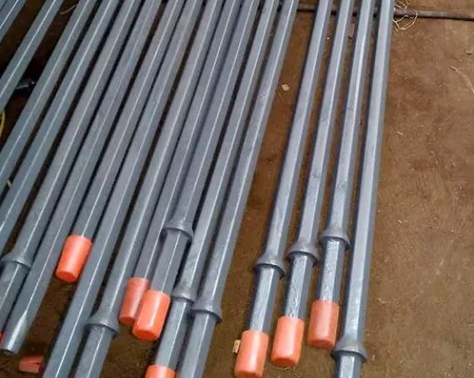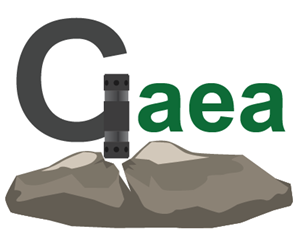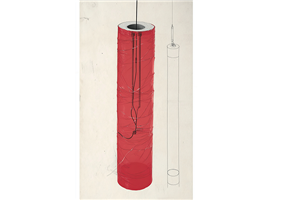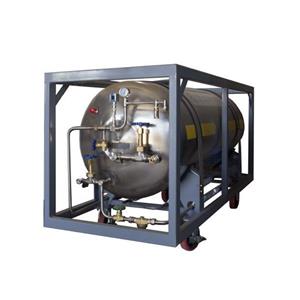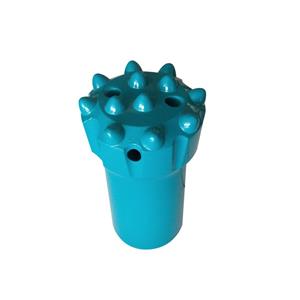What material are rock drill rods made of? Are the dimensions and weights the same?
The drill rod is the part of the rock drill that connects the drill bit and the drill tail. It is responsible for transferring the impact energy to the drill bit, the rotation torque and the flushing medium.
In actual use, the stress conditions of the drill rod are harsh and it is a consumable part that is easily consumed in large quantities.
Before buying, everyone will have questions. Is the consumption of the drill rod so large? Is it a material problem? What material is the drill rod generally made of? Are there any requirements for size and weight?
1. Drill rod material
The drill rod material is used at the front end of the rock drill and bears most of the impact force, so the hardness requirement is very high.
At present, the main material for producing drill rod material is steel. The strength and hardness of the drill rod material are improved by adjusting the proportion of chemical elements such as carbon, chromium, molybdenum, and nickel in the steel.
According to the different content of chemical elements, steel types are divided into carbon steel, silicon manganese steel, chromium steel, silicon manganese molybdenum steel, and silicon manganese molybdenum vanadium steel.
The manganese content affects the toughness and tensile strength of the drill rod material; the silicon content affects the yield strength of the steel to make the steel production process simpler.
2. Classification of drill rods
Drill rods can be divided into two types according to their connection methods: tapered connection drill rods and threaded connection drill rods.
Tapered connection drill rods
Suitable for drilling shallow holes. The tail is connected to the rock drill by the drill tail, and the tapered part of the head is connected to the drill head. However, this connection method has a disadvantage, that is, the tapered connection sleeve is easy to fall off during work, and it takes time to repair.
Threaded connection drill rod
It is more suitable for use when drilling deep holes. It can connect two drill rods with male threads with a sleeve with female threads. As the hole depth deepens, multiple drill rods can be connected. After drilling, they can be removed from the connection, which is very convenient. However, as the connection length increases, this drill rod is easy to break, and its workmanship is complicated and the unit price is relatively high.
3. Scope of use of drill rods
Due to the large variety of rock drilling equipment, drill rods also need different specifications to meet the use requirements of different equipment.
Handheld and air-leg pneumatic rock drills use B22mm, B25mm hexagonal cone connecting drill rods and integral drill rods.
Mining drill rigs (drill racks) and rail-type starter rock drills use B25mm hexagonal light and D32mm round wave thread connecting rod drill rods.
Hydraulic mining drill rigs use D38mm trapezoidal thread connecting rod drill rods.
Hydraulic excavation drill rigs use B28mm, B32mm, B35mm hexagonal drill rods.
Open-pit hydraulic rock drill rigs use D32mm, D38mm, D45mm, D51mm trapezoidal thread connecting rod drill rods and MF connecting rod drill rods.
4. Dimensions and weight of drill rods
The dimensions and weight of drill rods depend on their model specifications. The more commonly used models are B19, B22, and B25.
The B19 thread connection specification is 1/2-12M14*1.5, the length is between 0.4-2.8m, and the weight can be calculated as 2.26kg/m.
The B22 thread specification is M14*2 or M16*2, and the specifications are 1 meter, 1.5 meters, and 2 meters. Generally, the drill rod is not made over 3 meters, and the weight can be calculated as 3.06kg/m.
The B25 diameter is 25mm, the taper is 7, and the length can be selected between 0.3-10 meters. The weight can be calculated as 3.96kg/m.
